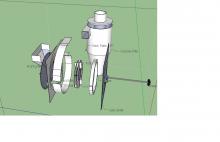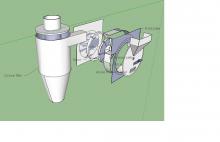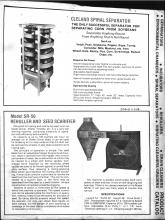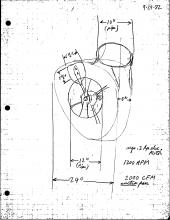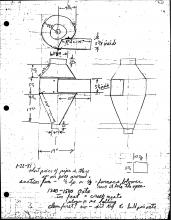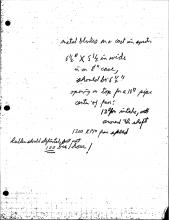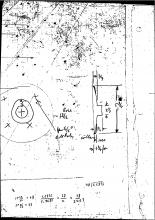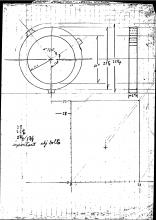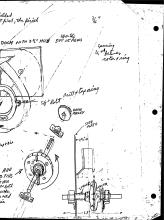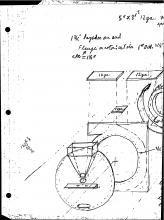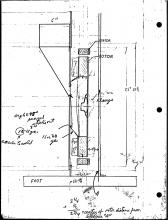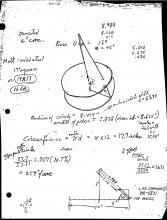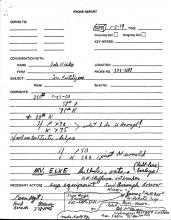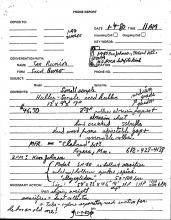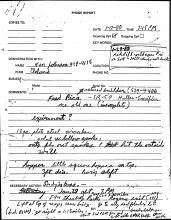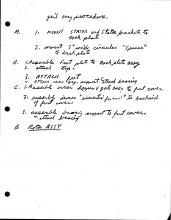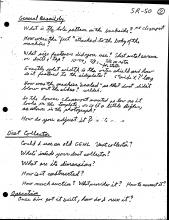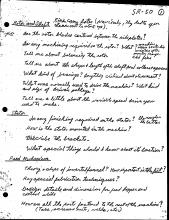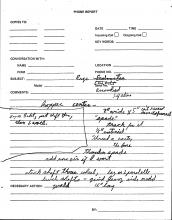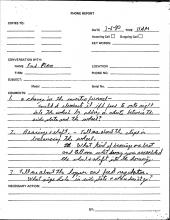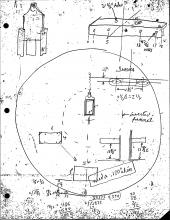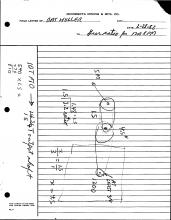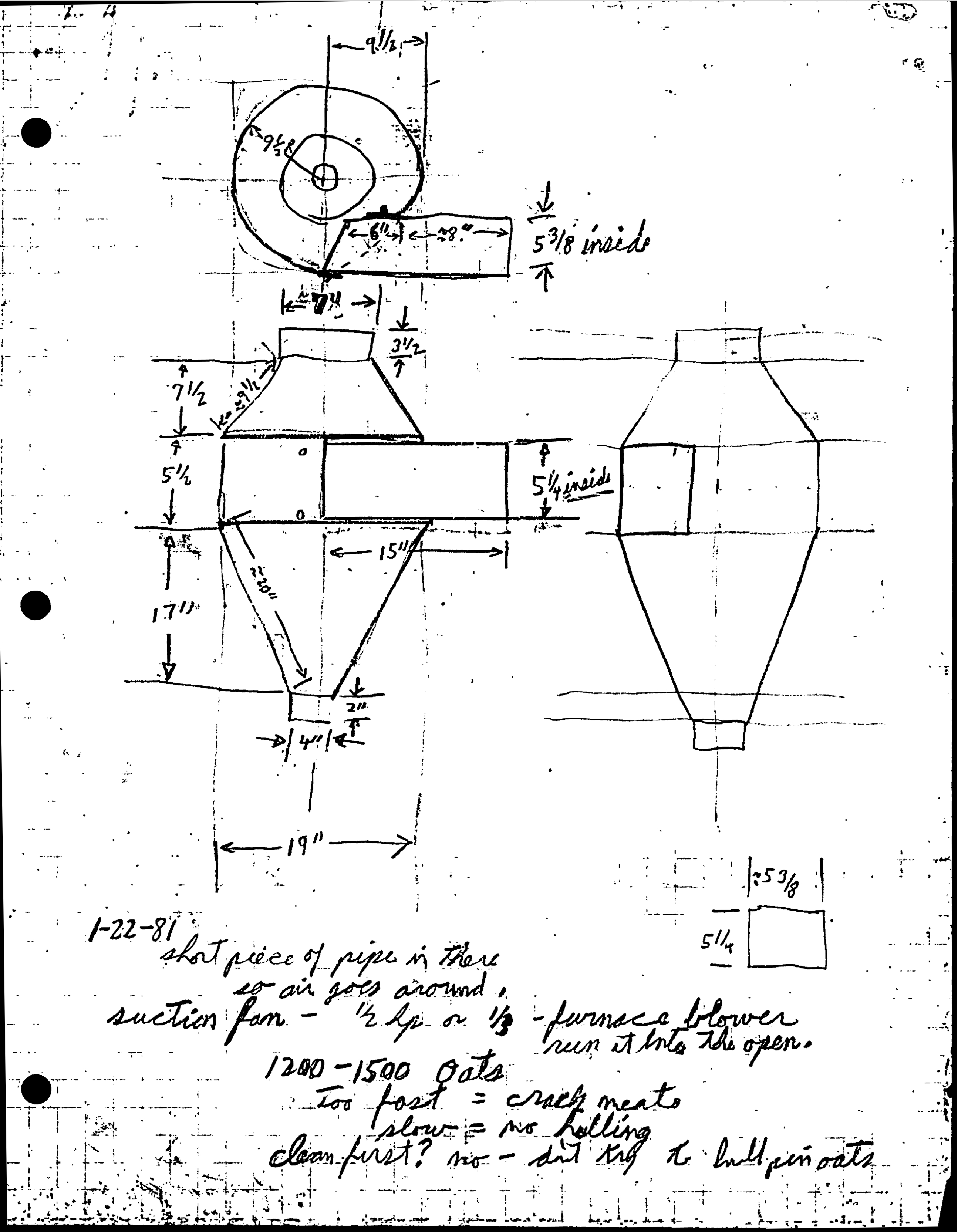
Oat and Grain Dehuller
Primary tabs

Problem Addressed REHULLER AND SEED SCARIFIER Small scale grain dehullers are not currently commercially manufactured. Larger units are too big for farm scale processing and cost tens of thousands of dollars. Without a dehuller farmers are without the option to dehull oats, rice, barley and spelt etc. for finished edible products like rolled oats.
This unit is also designed for hulling and scarifying seed, such as Sweet Clover, Alfalfa, Timothy, etc. It is a very fast working machine, combining simplicity of operation with efficiency and durability. Its capacity is up to 100 bushels per hour on average run of Sweet Clover Seed. It can be used for breaking dirt or clay lumps so that the dust can be removed by screens. It also does excellent work hulling oats.
Spelt & Barley Upgrade Spelt and Barley will not hull by impact alone, and require more friction and rolling motion. This can be accomplished by replacing the solid stator (fixed ring) with a screen material sized for the hulled grain and adding sweep agitators that roll and force the grain through the screen. These agitators have adjustable clearance by by being bolted to the existing hub assembly. Unlike the impact stator, the screens and agitators would extend the entire width of the inner enclosure. This upgrade was proposed by Klaas Martens of Lakeview Organic Grain. Commercial screens for this purpose are available and could be adapted to this design to increase the versatility of this device. Screen size and agitator clearance are important variables to test and document. The following images are of the "hammers" and screen setup.
technical drawings of screens and agitators are needed for this post
Functional Description The principle of operation is simple. The seed feeds from an adjustable hopper by gravity and suction. Seed is received from the hopper into a multiple tandem of tubes, the construction of which may be likened to a wheel with hollow spokes. Centrifugal force Imparted by the revolving wheel causes the seed to be thrown against a curved hard alloy surface, thus receiving a rolling-glancing blow which accomplishes the hulling and scarifying. A small dust collector is provided to receive the seed from the scarifying chamber. This can be connected to a suction pipe, or the hulls may be separated from the seed by a seed cleaner. Unique construction completely prevents clogging.
Severity of action is controlled by the speed at which the machine is operated. The speed control unit can be adjusted while the machine is in operation, making it easy to set the speed for any type of seed. By being able to properly adjust the speed, the operator, not only, can obtain best results on each sample, but the danger of over scarifying or breakage of the seed can be completely eliminated or reduced to a minimum.
This machine is durably constructed, built completely of steel and iron. It runs on self-alligning ball bearings. There is no upkeep expense to the Model SR-50. It will give you many years of trouble free service
Technical Specifications O-D
3D Length 54"; Width 32"; Height 46", Drive Shaft 1 r!o 3/16", Horsepower required 3 h.p. Operating Speed ^o 1200 to 2500 RPM, Capacity 50 to 100 bushels per hour, Adjustable Hi-Lo Pully 1" or 1 1/8" bore, Cleanout opening 3" x 4". Shipping weight 400 lbs.
Tasks to complete/Next Steps
A sketchup model that includes the stator, rotor and front cover has been started and can be found here Design files : Translate drawings into CAD files
Bill of Materials: Identify Bill of materials from notes and identify suppliers This table needs to be developed based on the documentation and notes posted above and key manufacturing steps documented.
Assembly: Document fabrication process Basic Steps (from notes) A. 1. Mount Stator and Stator Brackets to back plate 2. Mount 5" wide circular "spacers: to back plate B. 1. Assemble front plate to back plate assembly 2. Attach top 3. Attach feet 4. Attach rear bearing support 5. attach bearing C. 1. Assemble inner hopper and gate assembly to front cover 2. assemble inner "inverted funnel" to back side of front cover 3. Assemble bearing support to front cover 4. Attach bearing D. 1.Rotor Assembly
How to Use this tool: Insert footage of using the dehuller
Market Place (this section might link to fabricators of the tool or tool components who are members of the farm hack community)


